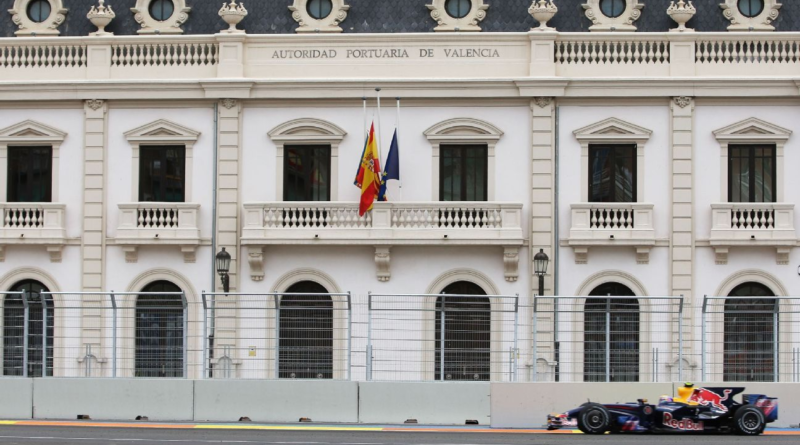By adding Madrid, F1 is risking street circuit saturation
Madrid is the latest city to get in on the Formula One boom with a street race, set to be added to the calendar in 2026, but the reaction to the new venue has been mixed at best.
“Street race” has become a loaded term in F1. To some critics, it can be an overwhelmingly negative description of a venue with an expectation of a processional race following the leader, although there have been great, good and bad examples of that type of event throughout the sport’s history.
Whether for or against the concept, it is impossible to ignore the trend forming on the Formula One calendar. This year, seven of the 24 races will be street races — Madrid will extend that number to eight. One is arguably the most famous race of all, in Monaco, and Singapore became F1’s first night event in 2008. Melbourne and Baku have established themselves as popular events, and three — Las Vegas, Miami and Saudi Arabia — have been added this decade.
Is F1 reaching a saturation point with this type of venue? Are people just bored of street races? Or are they all being unfairly tarnished with the same broad brush?
F1’s DNA
The question about street racing resonates given the popularity of purpose-built racetracks such as Austin’s Circuit of the Americas, Spa-Francorchamps, Suzuka and Silverstone, just to name a few of F1’s standout venues. It seems to go deeper than simply what types of circuits are joining the schedule, it’s as much about what they are replacing.
Some apprehension from fans will be that Madrid will replace Barcelona’s Circuit de Catalunya, a venue that has hosted the Spanish Grand Prix since 1991. It might not be an overwhelming fan favourite, but it is a venue that can boast 12 world champions — Lewis Hamilton, Max Verstappen, Michael Schumacher, Alain Prost, Nigel Mansell, Mika Häkkinen, Fernando Alonso, Kimi Räikkönen, Jenson Button, Damon Hill, Jacques Villeneuve and Nico Rosberg — on its list of winners. That’s heritage that cannot simply be conjured from thin air. Spain has also had an unsuccessful new event in recent memory: Valencia’s street track had a short-lived run as host of the European Grand Prix in the early 2010s.
F1 fans were perhaps somewhat spoiled by the number of conventional circuits during the pandemic-affected 2020 season. Given the nature of the restrictions in various countries, the championship filled gaps in the calendar by going to different circuits built specifically for racing — Istanbul Park in Turkey, the Nürburgring in Germany, Mugello and Imola in Italy, Portimão in Portugal — when it was simply not feasible for cities to host races. It gave the shortened season a nostalgic feel to it.
Imola has remained on the calendar, and several of the others are tracks fans want to see back. Malaysia’s Sepang International Circuit is another favourite for people putting together a dream F1 schedule.
The growth of the calendar in this decade has led to fears of F1 moving away from more conventional racing circuits and even, in some cases, beloved destinations. Spa, host of the Belgian Grand Prix, is considered one of the best circuits in the world, but its tenure as host of a Formula One race is continually in doubt. Silverstone, Monza and even Monaco, the most famous of all street races, have also had some uncertain times in recent years. As F1 CEO Stefano Domenicali pointed out with the launch of the event on Tuesday, Madrid’s event is proof that F1 is enjoying growth across the world — not just in America and in the Middle East, where the bulk of new races have been focused.
Not all street races are created equal
It’s not fair to hear “street circuit” and immediately assume a race will be bad. As Las Vegas demonstrated in November, and as Miami has for different reasons in its first two iterations, any new F1 race — whether on a street circuit or a more conventional track — will ultimately be judged by the on-track product. That quality is impossible to judge simply from a map, which is all we currently have of the new Madrid circuit.
Las Vegas was a good example of this. Anticipation for last year’s race reached a fever pitch in the weeks before, with many suggesting the streets surrounding the Strip would make for a dull race. Even once the race weekend had gotten underway, Verstappen said Vegas lacked emotion and passion of other venues, but he had changed his tune by the end of the week, which culminated with a grand prix featuring 82 overtakes over 50 laps. As it turned out, a circuit that on paper was hard to get excited about offered multiple opportunities to pass. Vegas was comfortably the best race of the year, and fans should remember that before dismissing a map of a circuit like Madrid.
Other new street circuits have had their moments, too. Saudi’s race is an almost frightening spectacle, given some of the speeds cars carry through the Jeddah Corniche Circuit’s tight and twisty sections, and has featured plenty of overtaking since arriving in F1. Baku has been a mixed bag — either wildly and chaotically entertaining or relatively timid and processional — while Singapore last year produced a gripping spectacle, as Carlos Sainz held off a chasing pack of cars for the only non-Red Bull win of the season.
If anything, it is F1’s most famous street race that gives the concept a bad name, although even the Monaco Grand Prix delivers a fantastic product at certain points. The principality’s famous race has turned into an almost contradictory weekend. Qualifying on Saturday is one of the events of the year, a genuinely breathtaking spectacle as drivers brush up against the barriers in search of thousandths of a second of lap time. Verstappen’s pole lap last year, for example, is one of the finest you will see in any modern F1 season.
A negative trait of Monaco actually helps the qualifying spectacle; the limited overtaking in the grand prix means the harbourside race can rightly claim to have the most consequential qualifying session in any given season. What follows on race day is often at the other end of the spectrum. Last year’s Monaco Grand Prix was entertaining when the rain fell, but an extreme change of weather can turn any spectacle into an all-time classic.
Monaco is perhaps where F1’s bloated current generation of cars look at their biggest as they squeeze around the narrow confines of the circuit or clumsily barge past each other at low-speed corners like the hairpin or Rascasse. Given how long F1 has been racing in Monaco, and how the logistics of the city prevent the circuit from being widened, it is hard to see Madrid falling into the same trap.
Location, location, location
One of the striking points of the Madrid circuit map was how far removed the location was from the centre of the city. The proposed circuit will snake around the IFEMA exhibition centre and what looks like an industrial area. This is part of what got the funding in the first place; Madrid’s organisers have local government backing to regenerate that particular area. We’ve seen events find funding away from downtown areas easier to come by in other sports; the Dallas Cowboys moving out to Arlington, Texas, is a U.S.-based example of recent times, a decision that continues to make headlines today.
The biggest task for the Madrid organisers will be to ensure their race does not feel disconnected from the city. When reports circulated last year about a potential race in London’s Docklands area, some asked why you would hold a race in such a city without incorporating some of its famous landmarks. Monaco is as famous for where it is held as anything else, and the visuals of the rich and famous on yachts overlooking the track have created an aura that has made it difficult to ever truly consider F1 without it. Las Vegas may well go on to create a similar vibe.
Without similarly compelling visuals, Madrid will need to work hard to avoid being painted with the same brush as a circuit like the Sochi Autodrom, formerly host of the Russian Grand Prix, which was quickly labelled a boring circuit in a soulless part of town. Sochi’s cause was not helped by the fact it rarely produced a gripping spectacle on track, which goes back to the last point, and some on social media have been quick to compare the Russian circuit’s layout with bits of Spain’s new track.
Judgment will need to be held until we can see cars racing down the streets of the Spanish capital in anger, though. It’s too soon for any cynicism for Madrid’s first F1 race of the modern era — for the venue itself or for the type of track it is.




